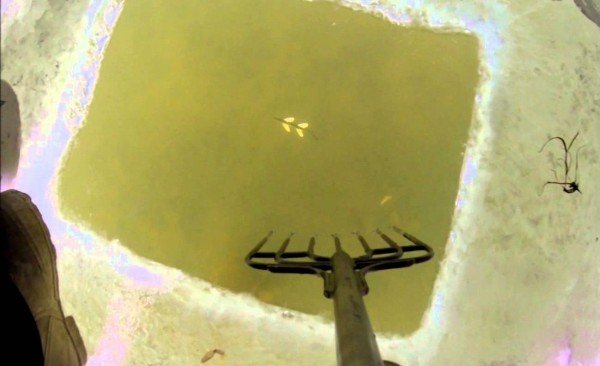Following a tradition European settlers inherited from the Native Americans, darkhouse spear fishermen venture out on frozen lakes and rivers each winter to pursue northern pike sturgeon, whitefish and other game fish species.
Compared to ice anglers, there are relatively few anglers who spearfish, but those who do are dedicated to the sport and the tradition.
Most spearfishing occurs in the Upper Midwestern states and the Northeast, where anglers cloak themselves in darkhouses, peer through holes in the ice and dangle decoys in the water, waiting for a fish to approach.
When a fish swims into view, they launch their spear, hoping it hits its mark.
States vary as to the species open for spearing, but northern pike and sturgeon are among the most popular targets for spear anglers.
Although spear fishermen do not take as many fish as ice fishermen, they tend to harvest larger fish, because they have the luxury of being more selective in the fish they target.
For those interested in darkhouse spearing, here are a few key tips to get you started.
Keep it dark
Unlike most fish houses for ice fishing, ice spearing darkhouses are painted black inside to reduce any light that may spook an approaching fish and to reduce the chance of the fish seeing shadow of the angler peering through the hole.
Be quiet
Staying quiet is important in most types of fishing, but it especially important in ice spearing. Even a slight bump on the ice or an unnatural movement can scare fish away from your decoy.
Decoys
Sucker decoys are among the most popular for spearing, but perch, panfish and even northern pike decoys can also work. Red and white decoys are very popular, but different colors work well under different conditions. The best tactic is to bring a variety of decoys along, in different shapes, sizes and colors. As with lures, a good decoy should move well in the water and provide action that attracts fish.
Circle the hole
As with lures, a good decoy should move well in the water and provide action that attracts fish. Move your line around the outline of your hole to create a good swimming motion. This will help draw fish toward your decoy.
Spears
Do not skimp on spears. A good spear is heavy, well-balanced and glides well through the water. This will improve your odds of the spear penetrating the fish.
Go from behind
As you are waiting for a fish to approach your decoy, your spear should be in the water, ready to go. The best way to spear the fish is from behind, so it is less likely to see the spear coming at it.
Spear fishing is a great alternative to ice fishing, which provides a unique experience of luring and taking fish through the ice. Anyone can do it, but it does take practice. Following the above tips will get you on your way to spearing fish through the ice.
Photo credit: Youtube








